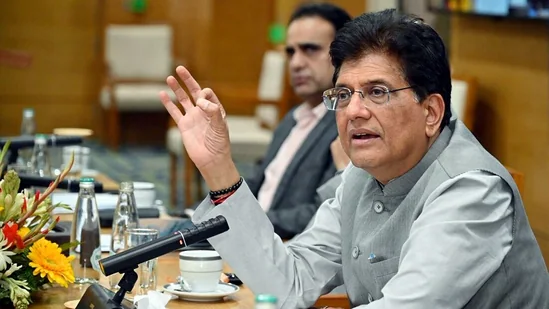India as a Global Emerging Model: Modiji’s Vision for a New Development Era
- MGMMTeam

- 3 days ago
- 4 min read
Prime Minister Narendra Modi’s remarks at the sixth Ramnath Goenka Lecture signal a clear shift in how India sees itself and how it wants the world to view its progress. He argued that India is no longer just an emerging market waiting to join the league of developed economies. Instead, it is an emerging model—a country offering its own blueprint for sustainable growth, resilient governance, and people-centric development. This distinction underscores India’s ambition to move beyond economic statistics and present a holistic vision of nation-building anchored in stability, social justice, and technological innovation.

Economic Resilience in Turbulent Global Times
Modiji highlighted that India’s growth story has remained consistent despite major shocks that rattled global systems. When Europe faced an unprecedented energy and supply chain crisis in 2022, India continued to maintain strong economic momentum. The following year, tensions in West Asia placed further pressure on global markets, yet India upheld nearly seven percent growth, reflecting deep structural strength. Recent data reinforces this trajectory. In the first quarter of FY 2025–26, India grew at 7.8 percent, outperforming major global peers and proving its ability to withstand external volatility. Analysts from IBEF and Business Standard noted that manufacturing, services, construction, and agriculture collectively contributed to this broad-based expansion.
The Ethos of “Constructive Impatience”
Drawing inspiration from Ramnath Goenka’s relentless pursuit of truth, Modiji described India’s current mindset as one driven by “constructive impatience.” This, he argued, is the restlessness that fuels change rather than chaos. It is the impatience of a society determined to innovate, modernize, and achieve self-reliance. India’s aspirations today are reflected in digital governance, rapid infrastructure expansion, and the country’s push into emerging technologies such as semiconductors, green hydrogen, and artificial intelligence. Modiji framed this spirit as the defining feature of a nation unwilling to remain stagnant and ready to challenge global benchmarks.
Towards Competitive Federalism and Development-driven Politics
A core theme of Modiji’s address was the need for Indian states to collectively foster a development-first political culture. He urged leaders across party lines to prioritize growth over power struggles and to see healthy competition as a catalyst for national advancement. States competing on ease of doing business, investment attraction, and social welfare delivery can, he argued, create a more dynamic federal ecosystem. Modiji dismissed the accusation of being in “constant election mode,” asserting instead that his governance model operates in “emotional mode” — a direct connection with the people, their aspirations, and their lived realities.
Inclusive Growth and the Mission of Social Justice
Modiji emphasized that India’s rise must be inclusive, ensuring that development reaches the last person in line. This aligns with the government’s “saturation mission,” which aims to deliver every welfare benefit—whether housing, electricity, healthcare, or financial inclusion—to all eligible citizens without discrimination. Reports from The Statesman reaffirmed his argument that social justice is central to India’s growth model. By combining infrastructure development with welfare saturation, Modiji positioned India as a nation balancing economic ambition with moral responsibility.
India’s Expanding Development Framework
India’s development trajectory today spans several fronts. Technological advancements are opening new doors in manufacturing and AI-driven governance. Multimodal infrastructure under the PM Gati Shakti plan is strengthening connectivity across states and reducing logistic bottlenecks that previously hindered industry. Meanwhile, India’s renewable energy expansion is reshaping its global standing, particularly in solar power production. Together, these initiatives position India not just as a fast-growing economy, but as a country pioneering a hybrid model of modernization—one that blends growth with sustainability, welfare with innovation, and culture with global ambition.
The MGMM Outlook
India’s current development story, as reflected in Prime Minister Narendra Modi's recent address, represents far more than a typical emerging-market trajectory—it signals a shift toward a new global development model shaped by stability, technological ambition, and inclusive governance. The country’s ability to maintain strong economic growth through global disruptions—from Europe’s 2022 energy crisis to West Asia’s tensions—shows a structural resilience that many advanced economies struggled to demonstrate. With India touching 7.8% growth in FY 2025–26 and expanding across manufacturing, services, construction, and agriculture, the narrative goes beyond GDP numbers. It frames India as a nation actively redesigning governance through digital transformation, self-reliant technology ecosystems, and a mindset of “constructive impatience” that pushes society toward innovation rather than inertia.
At the same time, Modiji’s emphasis on competitive federalism and welfare saturation reflects a political philosophy increasingly centered on development-first governance. This model aspires to uplift every eligible citizen through last-mile delivery of housing, infrastructure, healthcare, electricity, and financial inclusion—linking social justice with nation-building. India’s push in renewable energy, multimodal logistics via PM Gati Shakti, and emerging sectors like green hydrogen and semiconductors further strengthens the argument that the country is not following external templates but offering its own blueprint. In our viewpoint, India’s rise represents a blend of economic energy, technological confidence, and moral responsibility, positioning the nation as a global example of how growth, welfare, and cultural identity can move forward together.
(Sources: NDTV, Business Standard, The Statesman)




Comments